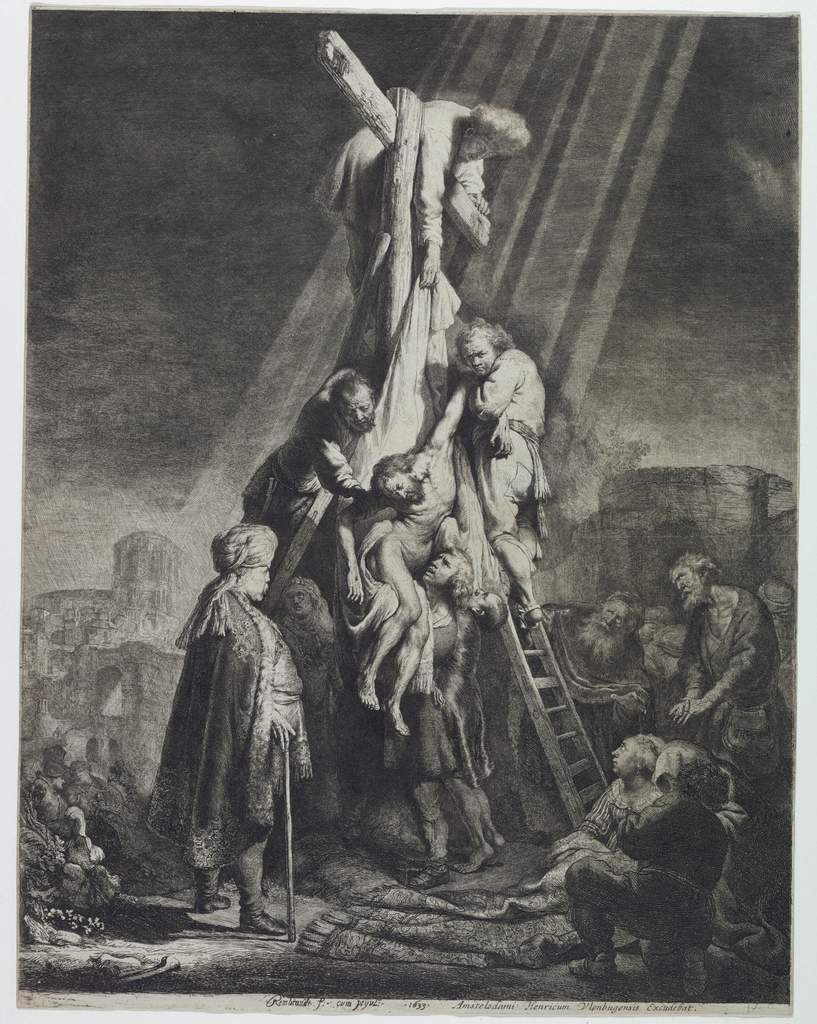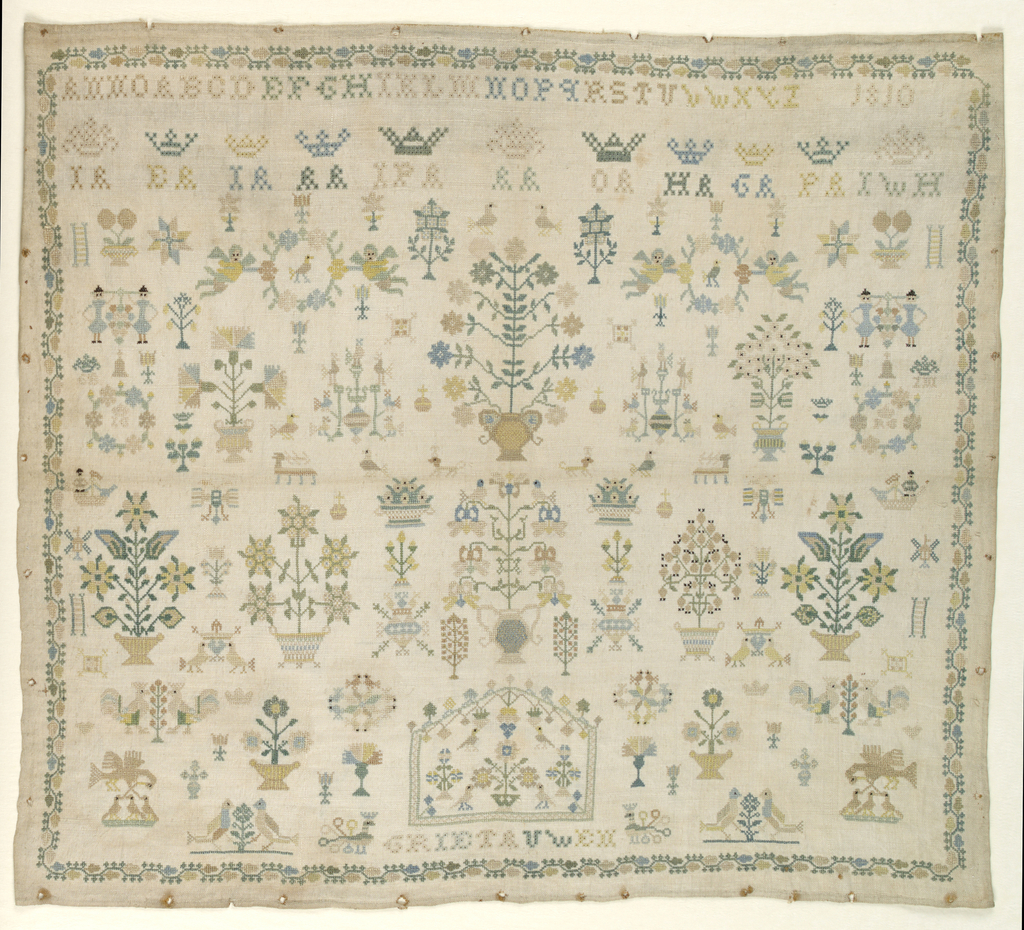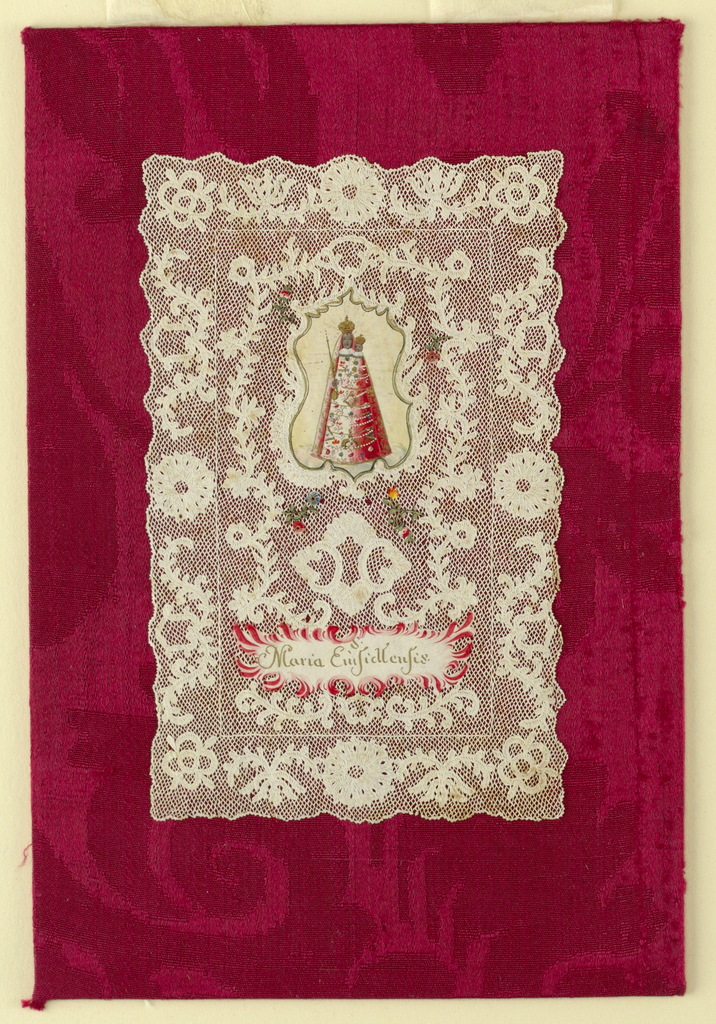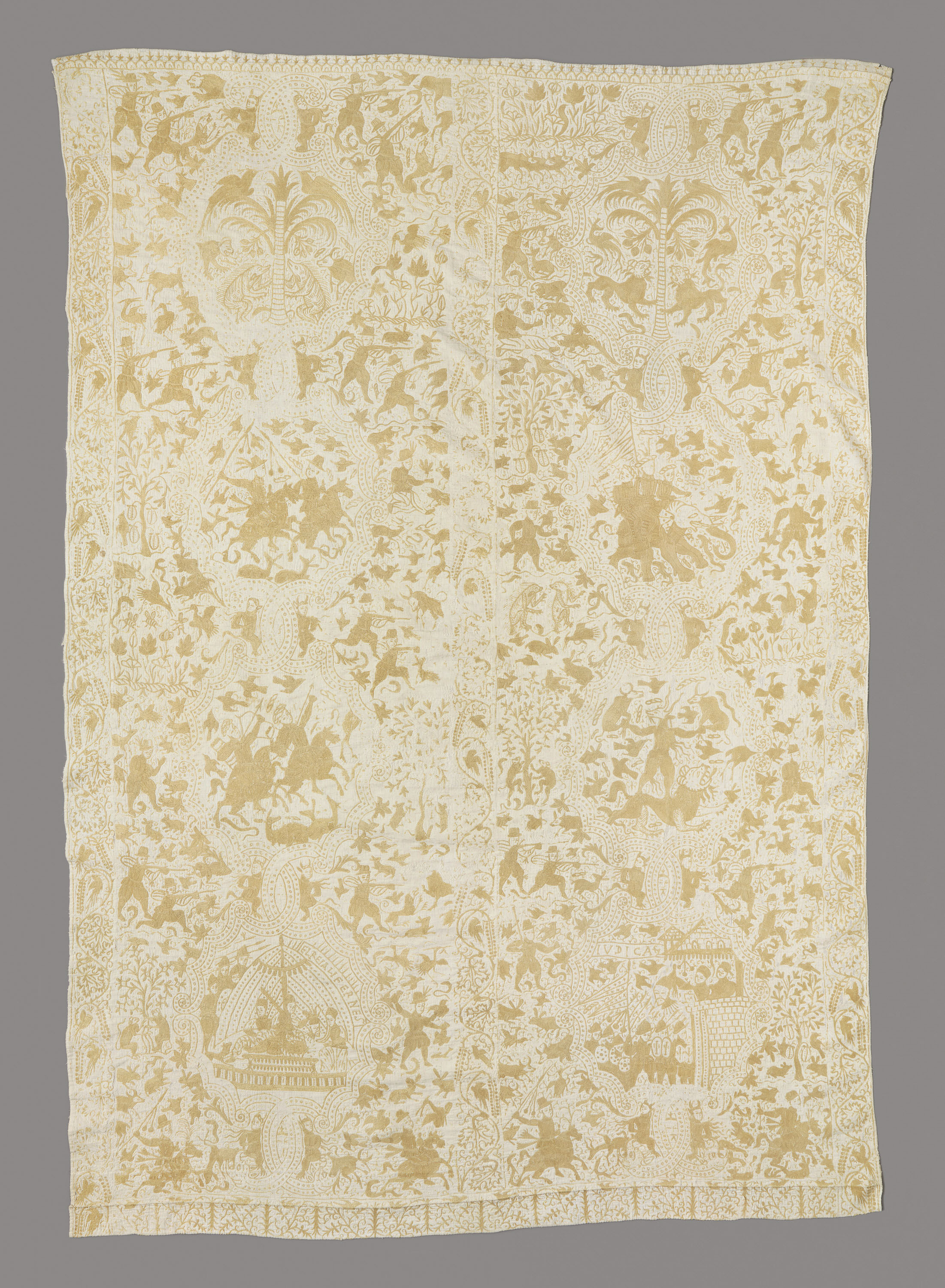Rembrandt Harmensz van Rijn (Dutch, 1606–1669) was a Baroque painter and printmaker best known for his self-portraits and illustrations of biblical scenes. He trained under two masters: Jacob van Swanenburgh (1571–1638), who specialized in cityscape paintings and scenes of hell and the underworld, and Pieter Lastman (1583–1633), who specialized in history paintings. Given his education with...
Griet Ruwen’s sampler shows how deeply ingrained faith and religion were in daily Dutch culture in the early 19th century. Even as she practiced her needlework, Griet expressed piety and religious devotion through symbolism. Below the crowns and initials are two angels holding a wreath of roses, which represents eternity. The wreath encircles a dove,...
One of many cut paperworks in Cooper Hewitt’s collection made by the same (now anonymous) craftsperson, this incredibly intricate devotional card is an example of the paper-crafting technique scherenschnitte (German for “scissor cuts”). Frequently used to embellish religious objects representing saints and other figures well-known to the Catholic, Germanic world of the 18th century, scherenschnitte...
Embroidered in Bengal, India for the Portuguese market, this colcha, or bedcover, is a result of the interchange of goods and cultural influence between two trade markets. The style and materials are typical of India, but the universal theme of good triumphing over evil is illustrated through a mix of local and European imagery. Eight...
The Sukkah City installation at Union Square last weekend was an ideal example of how to use public space in NYC. As the brochure educated: “Biblical in origin, the sukkah is an ephemeral, elemental shelter, erected for one week each fall, in which it is customary to share meals, entertain, sleep and rejoice. Ostensibly,...




